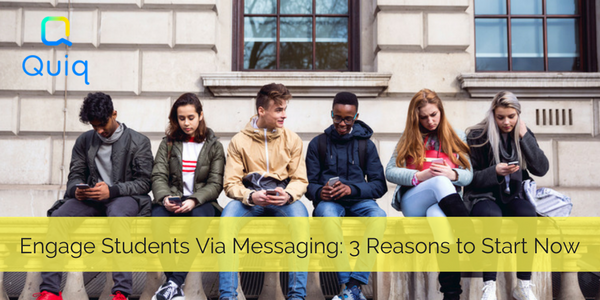Engaging Students Via Messaging: 3 Reasons to Start Now
It is no secret that is messaging is the preferred method of communication for nearly everyone. 97% of smartphone owners regularly use text messaging, making it the most widely-used feature according to Pew Research. Multiple studies have proven that when organizations offer their customers messaging, higher engagement and loyalty prevail.
Does this also hold true for students and educational institutions? Can messaging work for higher education as well as it does for companies? The answer is yes.
Why Use Messaging to Engage With Students?
Here are three reasons why you should use messaging to communicate with your prospective and current students:
1. Students Want to Communicate With Text
The #1 reason you should use messaging to have a conversation with your prospective and current students is they want you to. Your students want to interact with you via messaging because they simply don’t ever like to talk on the phone and email is for “old people”. They spend more time on their mobile devices than any other demographic and messaging is their preferred communication method. To that point, an independent study (Royall & Company) found that nearly three-quarters of prospective students want to text with admissions counselors.
2. Track and Analyze Engagement
The second reason is to track and monitor prospect students’ interest. Students that engage with educational institutions via messaging tend to show higher interest and a stronger likelihood of enrolling. Identifying these candidates early allows your college or university to nurture these prospects through the enrollment process, building a more sustained, long-term relationship.
3. Create A More Personal Connection
Finally, the key to student retention lies with making a connection. Messaging is a perfect communication medium for students and engaging with them via messaging is personal and easy, paving the way for a successful relationship. Prospective and current students have a direct connection your school right at their fingertips, allowing them to communicate whenever and wherever they want.
The bottom line is that adopting messaging to allow students and institutions to communicate is a critical component to engaging and attracting prospective students, as well as for retaining current students. Colleges and universities using messaging are already seeing great results. They understand that messaging can help prospective students navigate their path to and through college.


